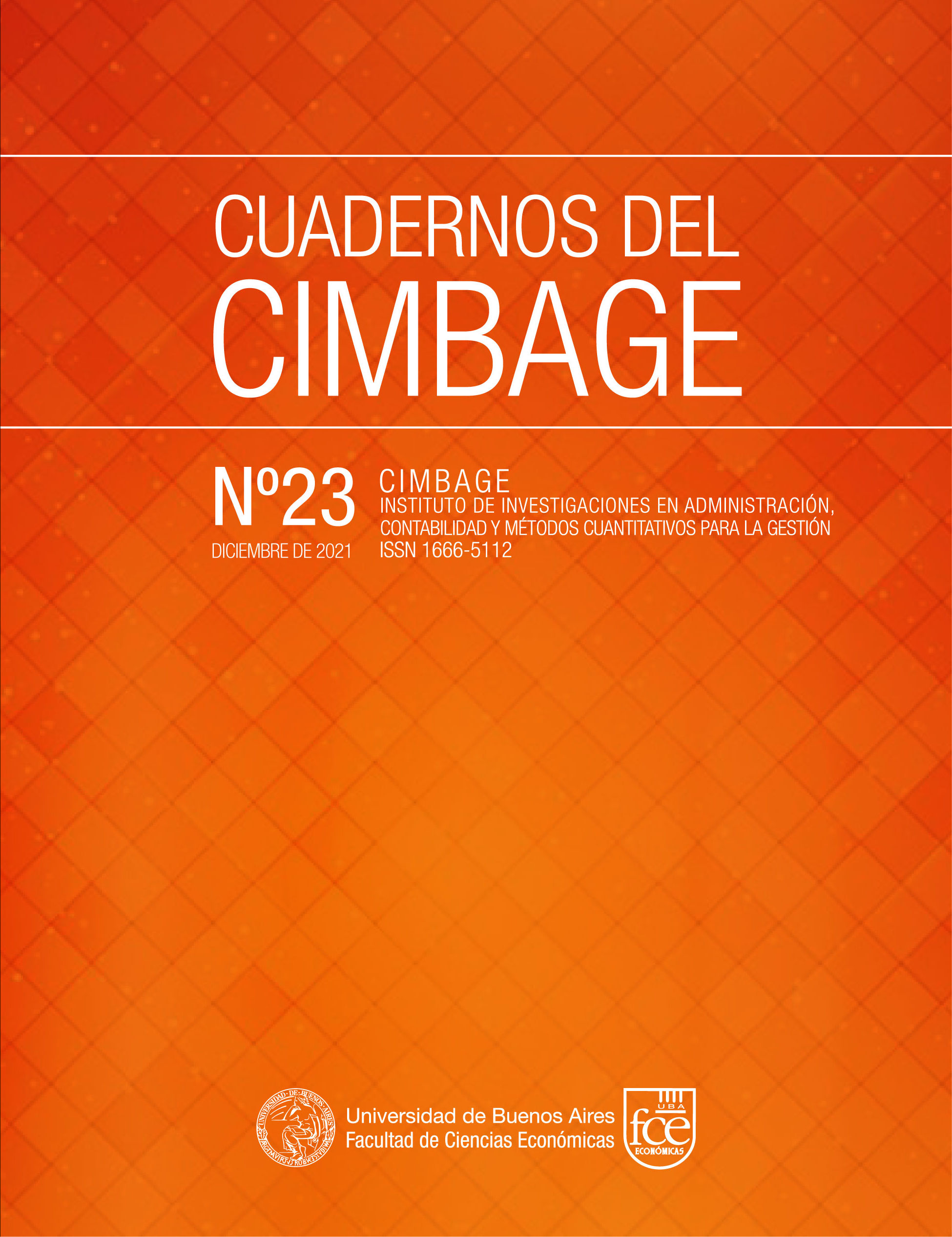¿Cómo el uso de las tic mejora la eficiencia de la gestión comercial en la banca minorista? los trabajadores perciben una evidencia en España.
Resumen
El artículo investiga los predictores de la eficiencia en la gestión comercial de la banca minorista a través de los usos de las tecnologías de la información y las comunicaciones (TIC). A partir de una muestra para 1,094 empleados y exempleados de una importante entidad financiera en España, la investigación ha obtenido dos resultados principales. En primer lugar, y para la muestra de empleados (692), la investigación obtiene que los usos de las TIC en otros elementos de valor del negocio bancario (gestión de riesgos, conocimiento y relación con el cliente, y usos profesionales del empleado), una edad menor, la organización del trabajo por objetivos, un mayor conocimiento de la política comercial de la entidad, y menores presiones competitivas del mercado (menor crecimiento de la demanda de operaciones y menos oficinas de otras entidades en el mercado próximo), determinan mayores probabilidades de mejoras de eficiencia en la gestión comercial a través del uso TIC. En segundo lugar, el análisis de los exempleados (402) refuerza los resultados obtenidos para los empleados en el sentido que los usos de las TIC vinculados con la gestión de riesgos, y con el conocimiento y la relación con el cliente, son los dos principales predictores de las mejoras de la eficiencia en la gestión comercial a través de las TIC. Las implicaciones estratégicas de los resultados obtenidos también han sido discutidas en la investigación.
Descargas
Citas
Achimba, C., Ongonga, J.O., Nyarondia, S.M., Amos, A.A.L., Okwara, M. (2014). Innovation in banking industry: Achieving customer satisfaction. Open Journal of Business and Management 2(4), 261-274.
Alabar, T.T., Agema, R.J. (2014). Information and communications technology and customer satisfaction in the Nigerian banking industry. Journal of Advanced Management Science 2(4), 333-338.
Bartel, A. P. (2004). Human resource management and organizational performance: Evidence from retail banking. Industrial & Labour Relations Review 57(2), 181-203.
Behera, A.K., Nayak, N.C., Das, H.C. (2014). Performance of banking sectors due to adoption of information technology (IT). International and Multidisciplinary Journal of Social Sciences 3(1), 91-110.
Bikker, J. A., Bos, J.W.B. (2008). Bank performance. A theoretical and empirical framework for the analysis of profitability, competition and efficiency. London and New York: Routledge.
Bikker, J.A., Spierdijk, L. (2008). How banking competition changed over time. T.C. Koopmans Research Institute Discussion Papers Series 08-04. Utrecht: Utrecht School of Economics.
Boot, A.W., Marinč, M. (2008). The evolving landscape of banking. Industrial and Corporate Change 17(6), 1173-1203.
Bos, J.W.B., Kolari, J.W. (2005). Large bank efficiency in Europe and the US: Are there economic motivations for geographic expansion in financial services? Journal of Business 78(4), 1555-1592.
Bos, J.W.B., Kool, C.J.M. (2006). Bank efficiency: The role of bank strategy and local market conditions. Journal of Banking & Finance 30(7), 1593-1974.
Gournaris, S., Boukis, A. (2013). The role of employee job satisfaction in strengthening customer repurchase intentions. Journal of Service Marketing 27(4), 322-333.
Kaura, V. (2013). Antecedents of customer satisfaction: a study of Indian public and private sector banks. International Journal of Bank Marketing 31(3), 167-186.
Martelo, S., Barroso, C., Cepeda, G. (2013). The use of organizational capabilities to increase customer value. Journal of Business Research 66(10), 2042-2050.
Maudos, J., Pastor, J.M. (2001). Cost and profit efficiency in banking: An international comparison of Europe, Japan and the USA. Applied Economic Letters 8(6), 383-387.
Maudos, J., Pastor, J.M., Pérez, F., Quesada, J. (2002). Cost and profit efficiency in European banks. Journal of International Financial Markets, Institutions & Money 12(1), 33-58.
Netquest (2014). Netquest Survey Manager (http://www.solucionesnetquest.com).
Safari, M.R., Yu, L.Z. (2014). Impact of information and communications technology on efficiency: Evidence from the Iranian banking industry. World Applied Sciences Journal 29(2), 208-218.
Skudiene, V., Everhart, D.D., Slepikaite, K. (2013). Front-line employees’ recognition and empowerment effect on retail bank customers’ perceived value. Journal of Service Science 6(1), 105-116.
Talukder, M.F.H., Hossain, M.Y., Hossain, M.N. (2014). HRM practice in commercial banks: A case study of Bangladesh. IOSR Journal of Business and Management 16(2), 29-36.
Van Hoose, D. (2010). The industrial organization of banking: Bank behavior, market structure, and regulation. Berlin: Springer-Verlag.
Aquellos autores/as que tengan publicaciones con esta revista, aceptan los términos siguientes:
- Los autores/as conservarán sus derechos de autor y garantizarán a la revista el derecho de primera publicación de su obra, el cuál estará simultáneamente sujeto a la Licencia de reconocimiento de Creative Commons Atribución-NoComercial-CompartirIgual 4.0 Internacional (CC BY-NC-SA 4.0) que permite a terceros copiar y redistribuir el material en cualquier medio o formato y adaptar — remezclar, transformar y construir a partir del material bajo la la misma licencia del original. En todos los casos, debe dar crédito de manera adecuada.
- Los autores/as podrán adoptar otros acuerdos de licencia no exclusiva de distribución de la versión de la obra publicada (p. ej.: depositarla en un archivo telemático institucional o publicarla en un volumen monográfico) siempre que se indique la publicación inicial en esta revista.
- Se permite y recomienda a los autores/as difundir su obra a través de Internet (p. ej.: en archivos telemáticos institucionales o en su página web) antes y durante el proceso de envío, lo cual puede producir intercambios interesantes y aumentar las citas de la obra publicada. (Véase El efecto del acceso abierto).
 Esta obra está bajo una Licencia Creative Commons Atribución-NoComercial-CompartirIgual 4.0 Internacional.
Esta obra está bajo una Licencia Creative Commons Atribución-NoComercial-CompartirIgual 4.0 Internacional.


